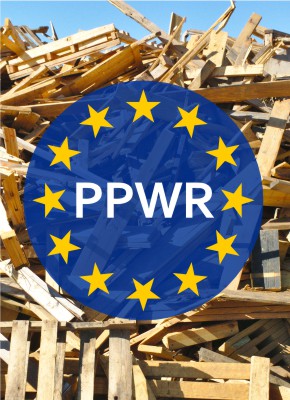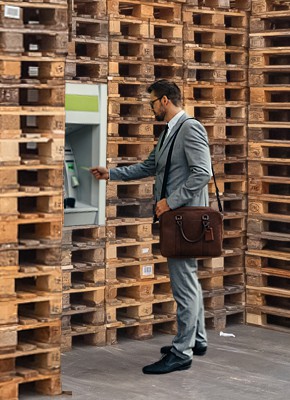"May you live in interesting times" J.Chamberlain
This old adage drawing attention to the volatility of events, the flurry of information, difficult decisions, and surprises that accompany our daily lives seems highly relevant. Today, this is visible in the logistics industry, which is extremely dynamic.
Recent events, such as the war in Ukraine with all its consequences (inflation, energy crisis, high material prices, broken supply chains, or geopolitical changes), have significantly altered the environment in which companies operate. To this must be added climate change and cyber-attacks. This has a significant impact on the way retailers ship and deliver goods to consumers.
Business leaders say their current supply chain problems are primarily due to global political unrest (58%), shortages of raw materials (44%), and rising fuel and energy costs (40%). Entrepreneurs who want to optimize their operations should use new ways to improve efficiency or flexibility, which will translate into business success. We wrote more on this topic in the article How to deal with supply chain disruption?
What lies ahead in 2023? Supply chain management trends are influenced by many factors, from technology and economics to world events. Here's what we think will be a hot topic in the global supply chain industry in the coming months.
1. Focus on flexible logistics
Flexible logistics adapt to market fluctuations and makes it possible to scale up or down the supply chain according to the current economic situation. To ensure stability and maintain a high level of service, companies need to ensure that their operations are adapted to the current situation or the availability and cost of raw materials.
As a result, many companies are focusing on reacting quickly to mitigate the short-term effects of the crisis, i.e., primarily to reduce the disruption to services. Logistic carriers' rental is a great help in this regard, making it easier to organize storage and production management. How does it increase the flexibility of operations and facilitate the modelling of supply chains to plan responses to disruptions? If you want to know more about this, we recommend our earlier article, Elastic approach in logistics key to success in times of change.
2. Improving visibility in supply chains
The pandemic caused global disruption, which we are still dealing with today. Lack of available components for production, considerable increases in raw material prices, or supply delays due to broken supply chains (especially the supply of components from the Far East) are just some of the challenges businesses face. These have revealed weaknesses in the operations and visibility of the supply chain of many companies.
In fact, only 6% of companies have complete visibility of their supply chains, and almost 70% do not. Visibility is one of the most essential aspects of supply chain management for dealing with risk - and with the digitalization of logistics, companies have better and better tools at their disposal for real-time data, digital documents, and tracking.

It is worth ensuring the visibility of your assets by looking at packaging management. For example, an integrated transaction management system allows you to get actual data from all parties in the process in real time. This way, we know exactly how much and where the logistics packaging is. Such a packaging management process enables complete media visibility, resulting in efficient working and savings.
3. Sustainability is a priority
Governments are demanding more and more from companies to prove that they operate sustainably and ethically. In Germany, the world's fourth-largest economy, the Supply Chain Due Diligence Act will come into force in January 2023, requiring companies to monitor entire supply chains (another reason why good supply chain visibility is crucial) and report partners causing environmental degradation. The European Union is working on similar legislation that could go even further.
Changing consumer demands and stricter government regulations will continue to push companies toward greener practices in 2023. Companies will continue to look for and take sustainable actions, from sourcing sustainable raw materials to assessing greenhouse gas emissions in transport. A notable example will be closed-loop supply chains, where manufacturers repair and reuse logistics packaging that works its way back into circulation. What practices are worth implementing in your company to align with your sustainability goals? Read our article 5 steps to build a sustainable supply chain.
4. Closed-loop supply chains are the future
Linear supply chains will soon be replaced by closed-loop chains, in which manufacturers refurbish used products for resale (East West, 2020). To cope with the rising cost of raw materials and their unstable availability, many companies break down their products into smaller components to recover raw materials.
Packaging pooling can help reduce costs beyond the initial cost of implementing new processes. Through such thoughtful measures, companies can spend less on raw materials and therefore enjoy less risk of price volatility. In addition, the packaging cycle generates less waste, helping companies to reduce their overall environmental impact. What are the financial benefits of using returnable packaging? Read more about the role of packaging working in a closed loop in the article: Make a financial profit with returnable packaging.
5. Reducing the just-in-time model and expanding infrastructure
Another trend related to supply chain disruption relates to stockpiling. Before 2020, companies typically prioritized lean inventory management, keeping what they needed in stock. However, this supply chain strategy had the opposite effect during pandemics, when companies were left without products for weeks or even months. To avoid supply chain disruptions and shortages, companies began to stockpile inventory and invest in warehousing. It means that the just-in-time model, if not wholly, will at least have to be scaled back to a large extent. Warehouses and logistics infrastructure will have to be expanded again.
Of course, one cannot be dogmatic about this; with the stabilization of the logistics industry, this trend may reverse. Therefore, in such an uncertain situation, it is a good idea to take an intermediate approach: it is worth keeping a slightly larger amount of stock 'on hand' than before the pandemic in case any supply chain problems arise again. To efficiently prepare the warehouse for changes, it is worth adjusting your logistics carriers to make the best use of every meter of storage space or to work with a partner who will deliver the necessary packaging at any time. What does such cooperation look like? You can find out by reading the article: Need pallets, pallet collars or containers "right away"? Use our packaging rental service.
6. Economic uncertainty calls for austerity
In the US, consumer prices rose by 9.1% from June 2021 to June 2022 This is the most significant increase in 40 years. In October, inflation in the euro area was even higher at 10.7%. This is the highest monthly reading since the creation of the euro area. The energy crisis engulfing Europe and the war in Ukraine is only adding to the uncertainty.

Therefore, now is the best time to stop and analyze your operations and consider the steps to improve efficiency or reduce costs in the coming year. Rotom is an experienced partner in the framework of packaging cost analysis and supports companies in adopting a strategy to reduce the price of logistics carriers. How to carry out such an analysis, and which options to use? We write about this in the article: 6 tips to reduce the cost of packaging and take care of the environment.
7. Transition from ownership to rental
By 2023, many more companies are expected to move from owning logistics assets to those on rent. This is driven by the need to meet zero emissions targets and increase sustainability efforts. Low-carbon and renewable technologies are now in the spotlight as logistics companies seek to shift more fundamentally toward green logistics.
Logistics carrier hire is a flexible, fast, and reliable solution. It proves its worth both when there is insufficient space to store products and when the company needs more packaging to ship the goods. By now, many companies have become convinced of the effectiveness of packaging rental in moments of crisis. What benefits has packaging rental brought to many companies? We have covered this topic in more detail in the post: Packaging rental - ensure continuity in changing conditions.
Summary - 7 Logistics Trends for 2023
In 2023, supply chains will face old and new challenges from the growing importance and need for sustainability efforts to achieve economic stability. Among these challenges, the winners will be the companies that are best prepared. Rotom's teams of experts across Europe help companies reduce costs and increase efficiency through better supply chain practices. We are ready to help assess your company's current processes and find the best-fit solutions for your logistics operations. If you have questions, please contact us, and we will be happy to explain the application of our services and their practical value to your business.


















